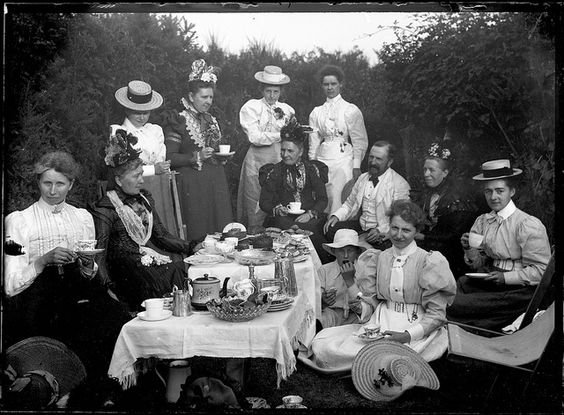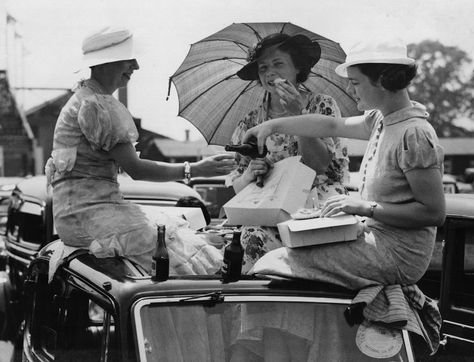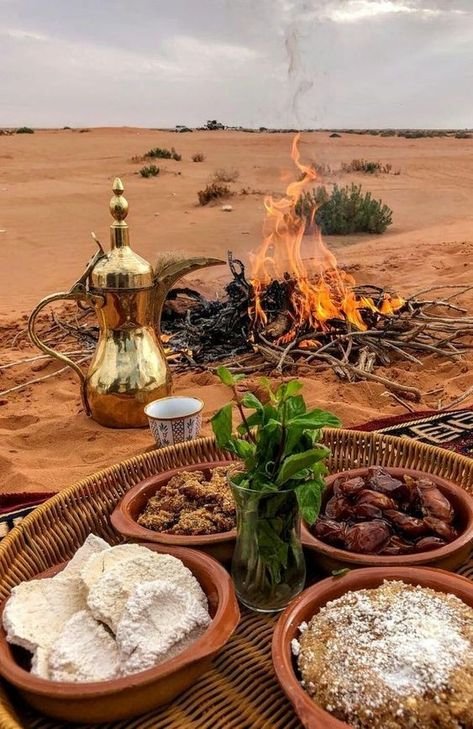A Stroll Through Picnic History
Pull on your wellies, grab a flask of something warming, and let’s take a wander through the ages — picnic basket in hand, of course. We’re about to step into the delightful (and sometimes surprising) history of picnics. From grand outdoor feasts to simple blanket spreads, picnics have been a beloved tradition for centuries. But it’s not all cucumber sandwiches and gingham blankets — oh no. The story of the picnic is rich with royal feasts, revolutionary ideas, and a fair share of quirks and curiosities.
So, ready to stroll through time? Let’s begin…
Ancient Feasts: From Pharaohs to Emperors
Our love of outdoor dining goes back thousands of years — long before the word “picnic” ever appeared. The ancient Egyptians were known to enjoy lavish outdoor feasts along the banks of the Nile, often to mark religious celebrations or honor the gods. These weren’t your average sandwich-and-thermos affairs — think roast meats, honey cakes, and, of course, jugs of wine.
In ancient Rome, the outdoor feast became something of an art form. The Romans loved a good convivium — a gathering of friends and family for food, wine, and philosophical debates. But why keep it indoors when you could take it outside to the countryside or a shady grove? The Roman elite would pack baskets of bread, olives, fruits, and cheese, heading out to villa gardens for a leisurely day of eating, drinking, and lounging in togas. (A bit more glamorous than your typical picnic rug, don’t you think?)
Of course, there was always entertainment, too. Musicians, poets, and even gladiators would perform at these al fresco banquets, making the Roman version of a picnic a full sensory experience.
Medieval Banquets: More Mead, Less Blanket
Now, let’s step into the Middle Ages, where feasting outdoors took on a more festive (and slightly rowdy) vibe. Forget the neatly packed hampers — medieval outdoor feasts were boisterous affairs, often tied to royal hunts or village festivals.
Picture this: knights and noblewomen returning from a hunt, boars and pheasants in tow, to a grand banquet spread out on long wooden tables under a canopy of trees. Mead flowed freely, and dishes ranged from roasted meats to spiced pies, with the occasional towering dessert that wouldn’t look out of place in a modern-day bake-off.
Of course, the peasants got in on the action too — albeit with humble picnics of bread, cheese, and ale. These gatherings were often community-driven, marking harvest festivals or holy days. And while they may not have had silver goblets or silk napkins, they certainly had spirit.
Interestingly, it was during the medieval period that the tradition of outdoor dining after church services became popular — a practice that still lingers today in the form of family picnics after Sunday service.
The Origins: From Banquets to Basket Feasts
The word “picnic” has roots in 17th-century France, derived from the term “pique-nique” — a rather fancy way of describing a gathering where everyone brought a dish to share. But these weren’t the humble blanket-in-the-park affairs we know today. Picture opulent banquetslaid out across lavish gardens, with silverware, fine wines, and (let’s be honest) probably a peacock or two on the menu.
These early picnics were more about status than simplicity — a chance for the upper classes to flaunt their wealth while sipping wine alfresco. Think less flask of tea, more flowing Champagne and a servant waiting nearby.
Curious for more? Learn about the grand feasts of the French aristocracy in my upcoming post: “Pique-Niques & Power: The French Origins of Picnics.”
The 18th Century: Picnics Go Public (and Political!)
By the late 1700s, picnics had crossed the Channel to England, where they took on a more rebellious twist. After the French Revolution, the public gained access to royal parks, and suddenly, outdoor gatherings became more democratic. No longer reserved for the elite, picnics were a way for everyone to enjoy the beauty of the outdoors — and perhaps a cheeky sip of wine while they were at it.
Imagine strolling through Hyde Park with a basket of treats, knowing that just decades earlier, this kind of outing would have been unthinkable for the average person. The picnic, once a symbol of wealth and exclusivity, was now a celebration of freedom and togetherness.
Fancy a walk through history? Keep an eye out for my deep dive: “Revolutionary Picnics: How the French Revolution Changed Outdoor Dining Forever.
The Victorian Era: Picnics, Romance, and Scandalous Sausage Rolls
Ah, the Victorians. If there’s one thing they loved, it was a picnic by the lake — complete with crustless sandwiches, sponge cakes, and a good dose of propriety. But beneath the layers of lace and etiquette, picnics had a cheeky side.
Victorian picnics were often romantic affairs, providing the perfect excuse for a stolen glance or a secret rendezvous. Think of it as the original dating app — but with gingham blankets and sausage rolls instead of swipes and likes.
Of course, no Victorian picnic would be complete without a basket from Fortnum & Mason. The iconic British brand has been supplying luxury picnic hampers since 1738 — a tradition that continues to this day. (Hint, hint: If you’re looking to elevate your next alfresco gathering, The Piknic Club will soon be curating heirloom-worthy picnic essentials.)
The Edwardians: The Golden Age of Picnicking
If the Victorians made picnics romantic, the Edwardians made them extravagant. The early 1900s saw elaborate picnics become the height of fashion. Imagine gorgeous wicker baskets, fine china, and multi-course meals served alfresco.
It was the era of Downton Abbey-style outings, with ladies in hats and gentlemen in tweed, all gathered on sprawling lawns for a day of indulgence. The Edwardians believed that outdoor dining was a luxury, and they weren’t wrong. These picnics were full-scale productions, complete with butlers, footmen, and, naturally, a glass of Champagne or two.
Love Edwardian elegance? I’m exploring it further in “Edwardian Elegance: The Golden Age of Picnicking.
The 20th Century: Picnics for the People
As the world changed through the World Wars, so too did the picnic. During the rationing years, people still found ways to enjoy a simple meal outdoors — albeit with a bit less Champagne and a bit more ingenuity.
By the 1950s and 60s, picnics became a staple of family life, with checked tablecloths, thermos flasks, and jam sandwiches making regular appearances. These were no-frills affairs, but they carried the same spirit of joy, connection, and a love for the great outdoors.
Fast forward to today, and picnics are having a modern renaissance. Whether it’s a cozy winter picnic with mulled wine or a summer spread by the sea, people are rediscovering the joy of slowing down and savoring life’s simple pleasures.
Why Picnics Still Matter
Picnics are about more than food — they’re about presence, connection, and finding joy in life’s little moments. They remind us to slow down, savor the changing seasons, and create memories that linger long after the basket is unpacked.
At The Piknic Club, we’re on a mission to bring back the art of picnicking, with curated collections, seasonal traditions, and a touch of everyday magic. Because, let’s be honest — life’s too short for soggy sandwiches.
So, whether you’re packing a flask of tea for a rainy-day ramble or planning a grand summer spread, know that you’re part of a tradition that’s been centuries in the making. Let’s keep it going — one blanket, one basket, and one beautiful moment at a time.
Love learning about picnics through the ages? Subscribe to Picnicly for more stories, tips, and seasonal inspiration to make your next alfresco adventure unforgettable.
Love Gemma xx







Is there anything more quintessentially British than a Scotch egg? This golden, breadcrumb-coated delight is the very definition of a picnic staple — a portable, savoury snack steeped in tradition, bursting with flavour, and endlessly versatile. Whether nestled in a Fortnum & Mason hamper, gracing a gastropub menu, or tucked into a well-loved picnic blanket, the Scotch egg is nothing short of a national treasure.